Exclusive Deals & Trending Items


Precious Moments BIS Hallmarked Colorful Lakshmi Ganesh Silver Coin Of 20 Gram in 999 Purity / Fineness by ACPL
Shop Now

Precious Moments Color Radha Krishna BIS Hallmarked Silver Square Coin Of 50 Gram in 999 Purity / Fineness by ACPL
Shop Now

Precious Moments Personalised BIS Hallmarked Wedding Anniversary Silver Coin Of 20 Gram in 999 Purity / Fineness By ACPL
Shop NowThe world is moving towards renewable energy sources, and silver is key in this change. For investors, knowing how silver helps in clean energy can open up new chances to invest.
Even though we often talk about cobalt, lithium, and nickel in renewable energy, silver demand is big in many clean energy areas.
Silver is more than just a precious metal. It’s a vital part in clean energy tech, like solar panels and electric cars.
Key Takeaways
- Silver plays a big role in the global energy shift.
- Clean energy tech depends a lot on silver.
- Knowing silver’s role can give investors useful insights.
- Silver demand is huge in alternative energy.
- Investors can gain from looking into silver’s investment side.
The Precious Metal Powering Green Technology
As we move towards green technology, one metal stands out. You might wonder why this metal is so key. It’s because of its special properties that fit perfectly with energy needs.
Silver’s Unique Properties for Energy Applications
Silver is a game-changer for green tech. It shines because of its high electrical conductivity, thermal efficiency, and optical reflectivity. These traits make it perfect for energy uses.
Conductivity and Thermal Benefits
Silver leads in electrical conductivity at standard temperatures. This makes it essential for electrical contacts in switches, transformers, relays, and capacitors. It helps renewable energy systems, like solar panels, work better.
Durability in Harsh Environmental Conditions
Silver also excels in tough conditions. It’s great for solar panels and wind turbines outdoors. Its resistance to corrosion and ability to handle extreme temperatures means these systems last longer.
Silver’s role in green tech is huge. Its special mix of properties is crucial for moving to renewable energy.
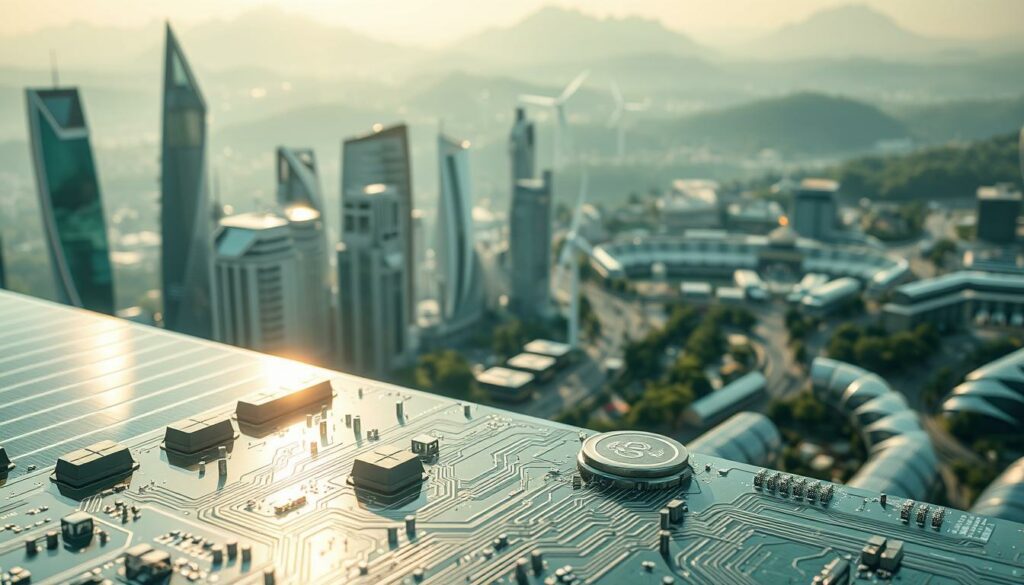

Understanding Silver’s Role in Renewable Energy
Silver is key in renewable energy because of its special properties. It helps reduce carbon footprint and is used in solar panels.
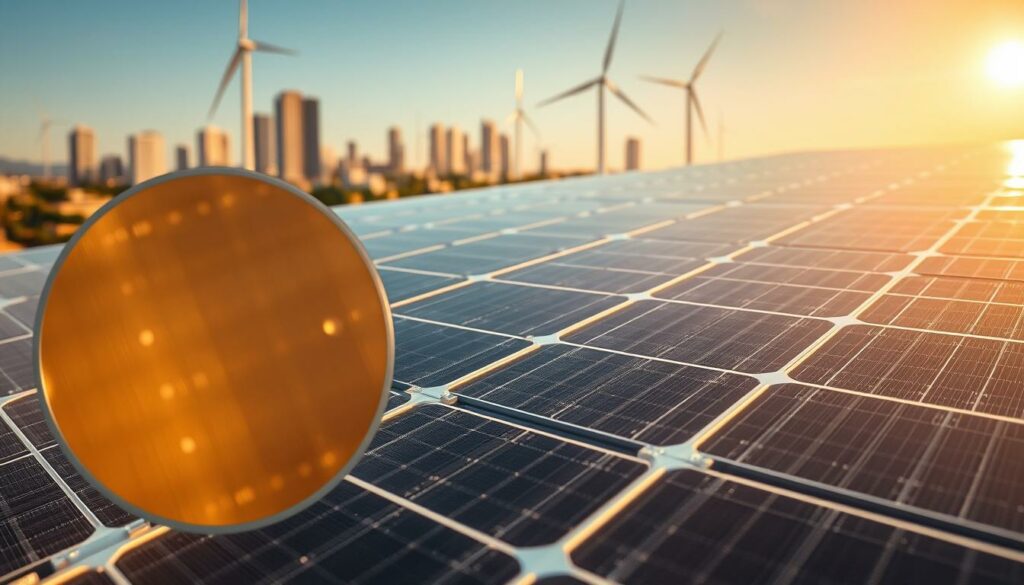

The Science Behind Silver’s Conductivity
Silver’s electrical conductivity is top-notch because of its atomic structure. This structure lets electrons move easily. This makes silver essential for renewable energy, like solar panels and energy-saving tech.
On average, a solar cell needs about 111 milligrams of silver. This shows how important silver is in solar tech. Also, the car industry, especially electric vehicles, uses a lot of silver. This is because silver makes EVs more efficient.
Why Alternatives Can’t Match Silver’s Performance
Even though copper is a good conductor, it can’t beat silver in high-efficiency uses. We’ll look at copper’s limits and why silver is better, even if it costs more.
Copper Limitations in High-Efficiency Applications
Copper is a good conductor but not as good as silver in high-efficiency uses. Silver’s better conductivity makes it the top choice when efficiency matters most.
Cost-Benefit Analysis of Silver vs. Substitutes
Even though silver is pricier than some alternatives, its benefits are worth it. Its efficiency and performance make it a valuable asset for renewable energy, especially in solar and EVs.
In summary, silver’s unique qualities and its role in improving renewable energy tech make it crucial for a sustainable future.
Silver in Solar Energy: The Photovoltaic Revolution
Silver is key in turning sunlight into electricity. As solar energy grows, so does the need for silver in solar panels. Solar panels use many materials, but silver is special because it conducts electricity well.
How Silver Makes Solar Panels Work
Silver paste is vital in making solar cells. It catches electrons from sunlight, thanks to silver’s great conductivity. In 2023, over 110 million ounces of silver were used in solar panels.
Silver Paste in Solar Cell Manufacturing
Silver paste is crucial for collecting electrons in solar cells. Silver’s high conductivity helps make thinner, more efficient cells. This is key for solar panels’ performance.
Efficiency Gains from Silver Components
Adding silver to solar panels boosts their efficiency. Silver improves conductivity and performance. This makes solar energy more appealing for homes and businesses.
Silver Content in Different Types of Solar Cells
The silver needed varies by solar cell type. The main types are crystalline silicon and thin-film technologies.
Crystalline Silicon vs. Thin Film Technologies
Crystalline silicon cells use a lot of silver. Thin-film cells use less but are less efficient. Here’s a comparison of silver use in different technologies:
| Solar Cell Technology | Silver Content | Efficiency |
|---|---|---|
| Crystalline Silicon | High | High |
| Thin Film | Low | Moderate |
| Next-Generation Solar | Varies | Potential for High |
Next-Generation Solar and Silver Requirements
New solar tech may change silver demand. Some might need more, others less. But silver’s special properties mean it will likely stay important in solar energy.
Beyond Solar: Silver’s Applications in Other Renewable Technologies
Silver is key in many renewable technologies, not just solar. As we move towards more diverse renewable energy, silver’s role will grow. It will be important in many sectors.
Wind Energy Systems and Silver Components
Silver is crucial in wind energy, especially in electrical parts of turbines. Its high conductivity is perfect for contacts and switches. As wind energy grows, so will the need for silver.
Electric Vehicles and Silver Usage
Electric vehicles (EVs) also rely on silver. It’s used in conductive pastes, circuit-breakers, and fuses. With more EVs on the road, silver demand will likely surge.
Energy Storage Solutions
Silver is used in energy storage, like advanced batteries. Its conductivity boosts battery performance and efficiency. As we focus more on energy storage, silver’s importance will increase.
| Renewable Technology | Silver Applications |
|---|---|
| Wind Energy | Electrical components, contacts, switches |
| Electric Vehicles | Conductive pastes, circuit-breakers, fuses |
| Energy Storage | Advanced battery technologies |
The Green Energy Transition: Driving Silver Demand
As the world shifts towards cleaner energy, silver’s importance grows. It plays a key role in renewable energy technologies. This shift is expected to boost silver demand.
Current Consumption Patterns in Renewable Sectors
Silver is mainly used in solar energy. It’s key for solar panels because it conducts energy well. It’s also used in electric vehicles and energy storage systems.
In 2024, silver demand is set to rise 9% to a record high. This is mainly due to solar panels and other renewable energy uses. This shows silver’s growing role in clean energy.
Projected Growth in Silver Demand
Silver demand is expected to keep growing. The global silver market will likely stay in deficit. This will push prices up.
Short-term Forecast (2023-2025)
In the next few years, silver demand will stay strong. The global silver market will have a deficit. This deficit will likely lead to higher silver prices, making it a good investment.
Long-term Outlook (2025-2035)
Looking to 2025-2035, silver demand’s outlook is positive. Growth in renewable energy will keep demand high. This supports silver as a valuable investment.
Key drivers of silver demand include:
- Increasing adoption of solar energy
- Growth in electric vehicle production
- Advancements in energy storage technologies
When investing in silver, knowing these trends helps. It aids in making smart choices for your portfolio.
Silver Supply Dynamics: Can Production Meet Green Energy Needs?
Silver is key to reducing carbon footprint. It’s vital for green technology, used in solar panels and electric vehicles. Knowing its supply is important for investors and policymakers.
The global silver mining scene is complex and faces many challenges. Let’s look at the current silver supply and what affects it.
Global Silver Mining Landscape
The global silver mining industry is seeing a drop in production. Silver mine production is expected to decline 1% in 2024 to 823 million ounces, the lowest since 2020. This drop is due to lower ore grades and higher costs. Mines struggle to stay profitable, leading to less output.
Recycling Potential and Urban Mining
Recycling and urban mining are crucial due to primary silver production limits. Recycling or scrap supply is expected to remain flat this year. Urban mining, recovering silver from waste, offers a big chance to help meet demand.
Supply Constraints and Bottlenecks
Recycling has its own challenges. These include the availability of recyclable materials and recycling technology. Geopolitical factors also affect mine production. Knowing these issues helps understand silver’s future for green energy.
| Supply Source | 2024 Projection | Trend |
|---|---|---|
| Mine Production | 823 million ounces | Declining |
| Recycling/Srap Supply | Flat | Stable |
| Urban Mining | Potential Growth | Emerging |
Investing in silver or green energy? Knowing about supply dynamics is key. The balance between supply and demand will shape the future of green energy and investments.
The Silver Market in India: Local Context and Opportunities
India is moving fast towards renewable energy, which means silver demand is going up. As an investor, knowing the Indian silver market is key.
India’s Renewable Energy Ambitions and National Solar Mission
India is leading in renewable energy, with big goals under the National Solar Mission. The push for clean energy is making silver needed for solar panels and other green tech. Silver’s special qualities are vital for making solar cells, essential for India’s solar projects.
The National Solar Mission wants to hit 100 GW of solar power by 2025. This will really up silver use in solar energy as India meets its green goals.
Domestic Silver Production vs. Import Reliance
India makes some silver at home but it’s not enough for the growing demand. So, India imports a lot of silver. Keep in mind, global silver prices and import rules can change silver’s cost and availability in India.
| Year | Domestic Silver Production (Tonnes) | Silver Imports (Tonnes) |
|---|---|---|
| 2020 | 350 | 1200 |
| 2021 | 320 | 1500 |
| 2022 | 300 | 1800 |
Indian Government Policies Affecting Silver Markets
The Indian government supports renewable energy and aims to cut fossil fuel use. These policies directly affect silver demand. Watch for government moves and rules that could shape the silver market.
Support for renewable energy and rules on silver imports are big factors in India’s silver market. Knowing these trends is vital for smart investment choices.
Silver Price Drivers in the Renewable Energy Era
The link between silver demand in green energy and its market value is key for investors. As we move towards cleaner energy, knowing what affects silver prices is vital. This knowledge helps in making smart investment choices.
Historical Price Trends and Volatility
Silver prices have always been up and down, influenced by many factors. Recent years have seen silver prices swing from $13 to over $28 per ounce. This swing is due to silver’s role in both industry and as a safe-haven asset.
Historically, silver prices react to changes in demand, especially from green energy. As demand for silver in solar panels and clean energy grows, so might silver prices.
How Green Policies Influence Silver Valuations
Green policies are changing how we value silver. Governments are pushing for more renewable energy to cut carbon emissions. These efforts boost silver demand in solar energy, thanks to silver’s electrical conductivity.
This increased demand for silver in green energy is expected to push prices up over time. Investors should watch green energy policy changes and their effect on silver demand.
Price Forecasts Based on Energy Transition Scenarios
Experts have made different scenarios to predict silver demand and prices. According to these, silver prices are set to rise as green energy demand grows. Here’s a detailed look at these forecasts:
| Scenario | 2025 Silver Price Forecast ($/oz) | 2030 Silver Price Forecast ($/oz) |
|---|---|---|
| Low Growth | 20 | 25 |
| Moderate Growth | 25 | 35 |
| High Growth | 30 | 45 |
Investment Vehicles for Silver Exposure in India
In India, you have many ways to invest in silver. Each option suits different investment strategies and tastes. Silver’s role in green tech, especially in solar panels, makes it a great investment.
Physical Silver: Coins, Bars, and Digital Silver
Buying physical silver is a classic choice. You can get silver coins, bars, or digital silver. Digital silver is modern and easy, without the need for storage.
Tax Implications for Indian Investors
Think about the taxes when investing in physical silver in India. Capital Gains Tax might apply when selling. The tax rate depends on how long you held the silver.
Storage and Insurance Considerations
Physical silver needs safe storage to avoid theft or loss. You might need insurance to protect it, which adds to the cost.
Silver ETFs and Funds Available to Indian Investors
Silver ETFs are a modern, easy, and safe way to invest in silver. SEBI in India has approved them. These funds are backed by real silver and can be traded on stock exchanges, offering flexibility.
“Silver ETFs provide an efficient way to invest in silver, eliminating the need for physical storage and insurance.”
Indian and International Silver Mining Stocks
Investing in silver mining stocks is another option. You can choose Indian or international companies. This way, you can benefit from silver’s growth in green tech.
| Investment Option | Key Features | Risk Level |
|---|---|---|
| Physical Silver | Tangible asset, direct exposure to silver price | Medium |
| Silver ETFs | Convenient, secure, backed by physical silver | Low to Medium |
| Silver Mining Stocks | Potential for growth, linked to company performance | High |
Risk Assessment for Silver Investments
Thinking about investing in silver? It’s key to know the risks. Silver prices can swing a lot, due to many things like demand and what central banks do. This ups and downs can change how much you make, so it’s important to look at the risks closely.
Market Volatility and Liquidity Concerns
Silver’s price can change fast. This is because of many things, like how much people want it and how they feel about it. Also, how easy it is to sell silver can be a problem. This can make it hard to sell quickly or at a good price.
Technological Disruption Risks
New tech can change how much silver is needed. For example, better solar panels might use less silver. Keeping up with these changes is important for knowing if silver will stay valuable.
Regulatory and Policy Uncertainties in India
Changes in rules and policies in India can also affect silver. For example, new rules on green energy can change how much silver is needed. Watching these changes is important for silver investors.
| Risk Factor | Description | Potential Impact |
|---|---|---|
| Market Volatility | Rapid price fluctuations due to demand and supply factors | High |
| Technological Disruption | Advancements reducing silver usage in renewable energy technologies | Medium |
| Regulatory Uncertainties | Changes in government policies affecting silver demand | High |
Balancing Your Portfolio with Silver and Renewable Energy Assets
Adding silver and renewable energy assets to your portfolio can make it stronger. The demand for silver in green tech is growing. This makes silver a good investment for the future.
Allocation Strategies for Different Investor Profiles
Your investment strategy depends on your risk level and goals. This is true for silver and green energy investments.
Conservative Investor Approach
Conservative investors might choose smaller shares of silver and green energy. They focus on stable companies. Investing in silver ETFs or renewable energy stocks with a solid history is a safe bet.
Growth-Oriented Investor Approach
Growth investors might put more into silver and green energy. They look at new companies or technologies with big potential. This could mean investing in emerging renewable energy technologies or silver mining companies with bright futures.
Diversification Benefits and Correlation Analysis
Adding silver and green energy to your portfolio can spread out risk. Their performance doesn’t always match traditional investments. A diverse portfolio with these assets can lower risk and possibly increase returns.
| Asset Class | Correlation with Silver | Correlation with Renewable Energy Stocks |
|---|---|---|
| Stocks | 0.3 | 0.5 |
| Bonds | 0.1 | 0.2 |
| Silver | 1 | 0.4 |
| Renewable Energy Stocks | 0.4 | 1 |
Knowing how different assets relate to each other helps in balancing your portfolio. The table shows silver and green energy stocks don’t always move with traditional assets. This makes them great for a well-rounded investment plan.
Silver vs. Other Metals in the Green Energy Space
In the world of renewable energy, many metals are important, with silver being a standout. As we move towards cleaner energy, knowing how different metals fit into this shift is key. This knowledge is vital for investors and those in the industry.
Silver is not alone in green energy; metals like copper, lithium, and rare earth elements also have big roles. To see silver’s potential, we must compare it to these metals.
Comparing Silver to Copper, Lithium, and Rare Earth Elements
Let’s look at how silver stacks up against other metals in green energy:
| Metal | Primary Uses in Green Energy | Key Characteristics |
|---|---|---|
| Silver | Solar panels, electrical contacts | High electrical conductivity, antimicrobial properties |
| Copper | Wiring, electrical systems | Excellent electrical conductivity, durable |
| Lithium | Batteries for electric vehicles and energy storage | High energy density, rechargeable |
| Rare Earth Elements | Wind turbines, electric motors | Unique magnetic and luminescent properties |
Creating a Balanced Metals Portfolio for Energy Transition
To make the most of the growing demand for metals in green energy, investors should think about a balanced metals portfolio. This means spreading investments across different metals, like silver, copper, lithium, and rare earth elements. This approach helps reduce the risk of price swings in individual metals and takes advantage of the clean energy market’s growth.
When planning your investment, keep in mind that silver demand in alternative energy sources is increasing. By understanding the roles of various metals in green energy and diversifying your portfolio, you can be well-positioned for a sustainable energy future.
Technological Innovations Affecting Silver Usage
Breakthroughs in technology are changing how we see silver in renewable energy. If you’re thinking about investing in silver, knowing about these changes is key.
Thrifting: Reducing Silver Content in Solar Panels
“Thrifting” is a big trend in solar panels. It means using less silver. This is done by making solar cells work better and finding other materials for parts.
New tech lets us get the same or better results with less silver. This is a big win for the environment and for saving money.
Emerging Technologies That May Increase Silver Demand
But, new tech could also make us want more silver. Two areas to watch are solid-state batteries and smart grid tech.
Solid-State Batteries and Silver Components
Solid-state batteries are getting a lot of attention. They could use silver to make them work better and safer. Silver helps with conductivity, which is important for these batteries.
Smart Grid Applications
Smart grids are also on the rise. They need silver because it’s great at conducting electricity. As smart grids grow, so might the need for silver.
ESG Considerations for Silver Investments in India
When you think about investing in silver in India, it’s key to know about ESG. ESG stands for Environmental, Social, and Governance. These factors are important for the sustainability and ethics of your investments.
Environmental Impact of Silver Mining
Silver mining has environmental effects, like water pollution and land degradation. But, the industry is changing. Many mines are now using better practices to lessen their harm.
For example, some mines are working on reclamation programs. These programs help restore land after mining.
- Reduced water usage through more efficient mining techniques
- Implementation of renewable energy sources in mining operations
- Increased focus on recycling silver from electronic waste
Social and Governance Factors in the Silver Supply Chain
Social and governance issues are also important. This includes labor practices, community engagement, and corporate governance. Look for companies that treat workers well and work with local communities.
Good governance means being open about operations, fighting corruption, and having diverse boards. By thinking about these ESG factors, you can make better choices for your silver investments in India.
Future Outlook: Silver’s Long-term Prospects in a Sustainable World
The world is moving towards sustainable energy, and silver’s role is becoming more important. As we invest in renewable energy, silver demand will likely rise. This is because silver is key in these new technologies.
The 2030-2050 Horizon for Silver in Renewable Energy
By 2030-2050, silver demand in renewable energy will see a big jump. Silver’s conductivity and durability make it perfect for solar panels and other green tech. Solar energy growth, especially in places like India, will boost this demand.
Here’s a breakdown of the projected growth in silver demand for renewable energy applications:
| Year | Projected Silver Demand (in million ounces) | Primary Drivers |
|---|---|---|
| 2030 | 250 | Increased solar panel production |
| 2040 | 350 | Growth in electric vehicles and energy storage |
| 2050 | 450 | Expanded adoption of renewable energy technologies |
Potential Game-Changers for the Silver Market
Several factors could change the silver market in the next few decades. Technological innovations that affect silver use in green tech are key. For example, better solar panels might use less silver, while new energy storage tech could need more.
Government policies and global climate change agreements will also shape silver demand. Countries like India setting renewable energy goals will help increase silver demand.
Conclusion: Navigating the Silver-Green Energy Nexus as an Investor
Silver plays a key role in moving towards a greener energy future. Its demand is growing fast, thanks to the need for better energy solutions. Knowing how silver helps in making energy sustainable can open up new investment chances.
When looking at silver, think about what affects its demand and supply. The more silver is used in solar panels and electric cars, the higher its price might go. This is because these green technologies need silver to work well.
Investing in silver and green energy requires a deep understanding. Keep up with the latest in renewable energy and silver markets. This way, you can take advantage of silver’s growing importance in a greener world.






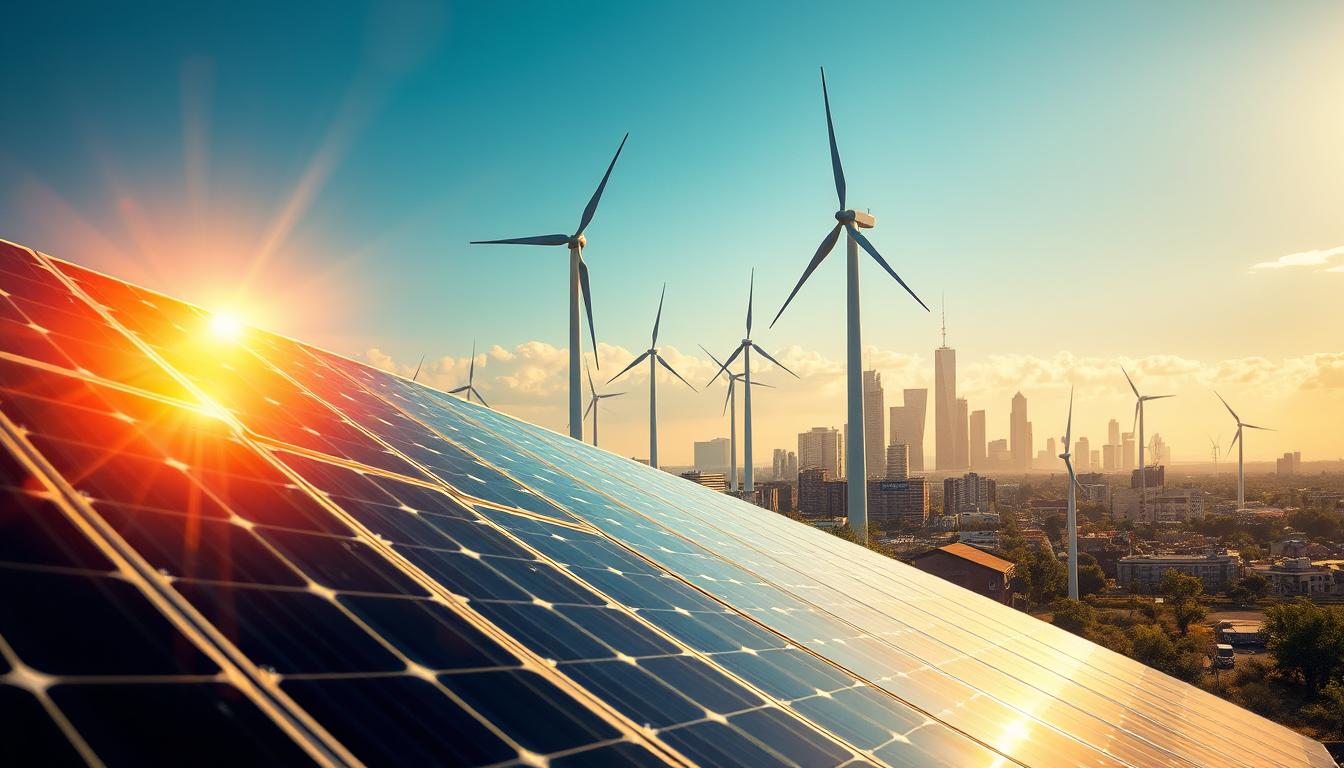

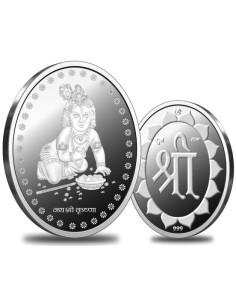
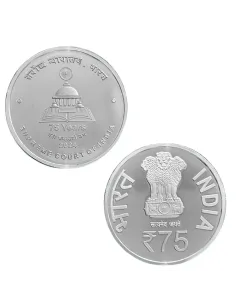

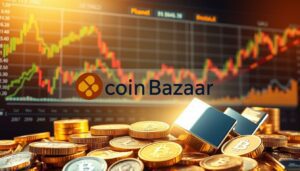






4 Responses
Great insight on silver’s industrial value—especially in solar tech. With global demand for clean energy ramping up, this could really drive long-term demand for silver.
Silver’s role in clean energy tech really can’t be understated. Given the increasing focus on sustainability, it seems like silver’s demand will continue to rise. Investors who understand this trend might have a significant advantage moving forward.
I hadn’t considered how crucial silver is to technologies like EVs and solar panels. Makes me rethink how to diversify within metals for a more future-forward portfolio.
It’s fascinating how silver is often overshadowed by metals like lithium or cobalt when it plays such a crucial role in clean energy. The future of solar and electric vehicles definitely depends on a steady supply of silver.